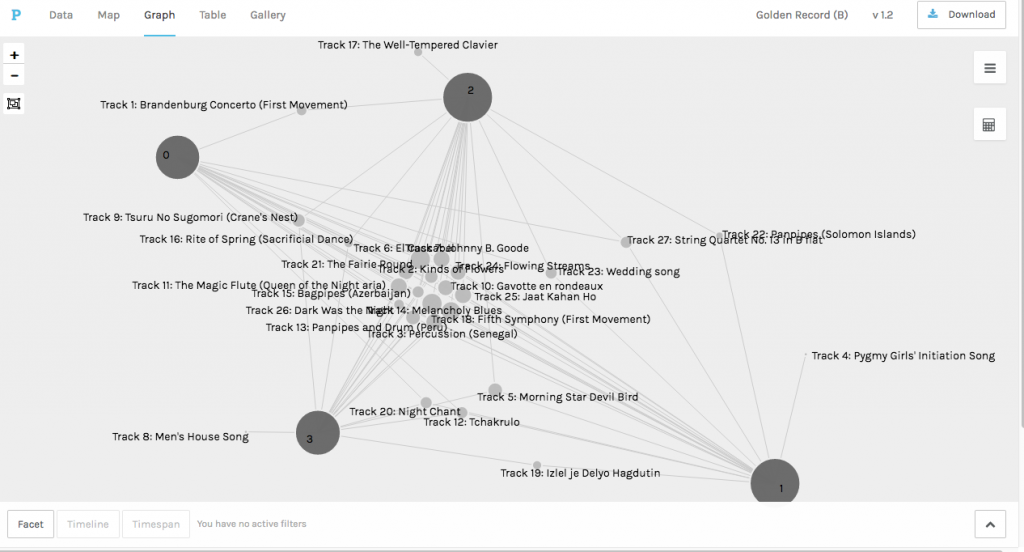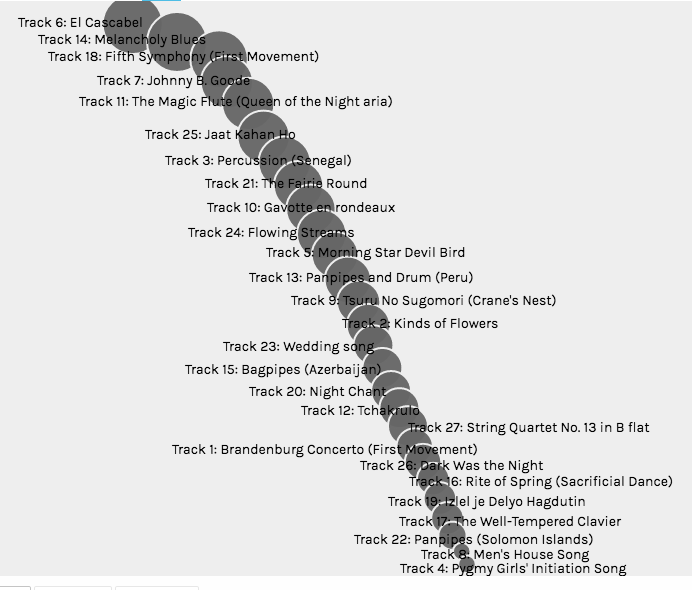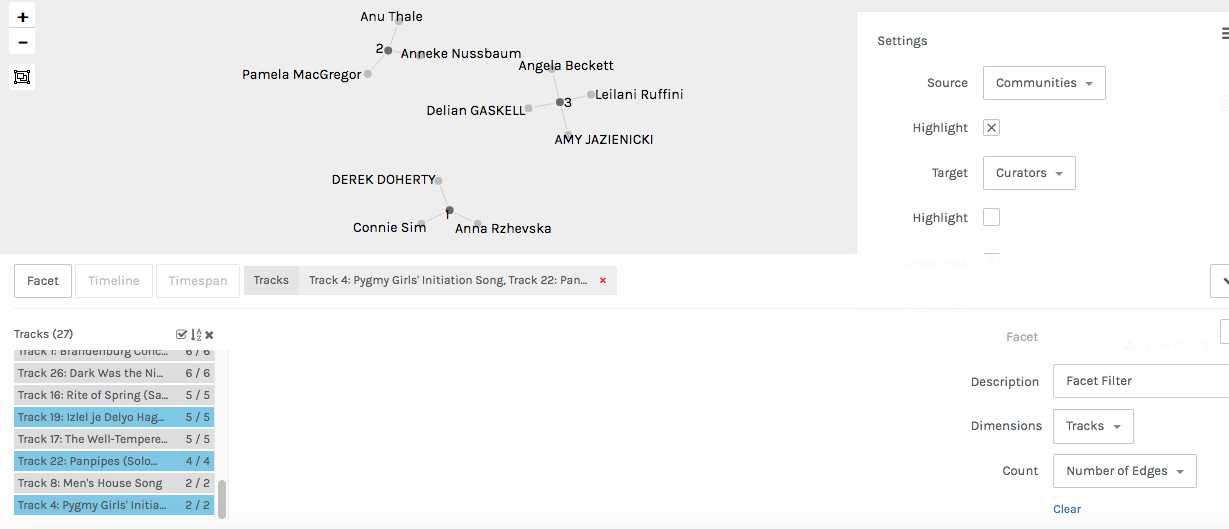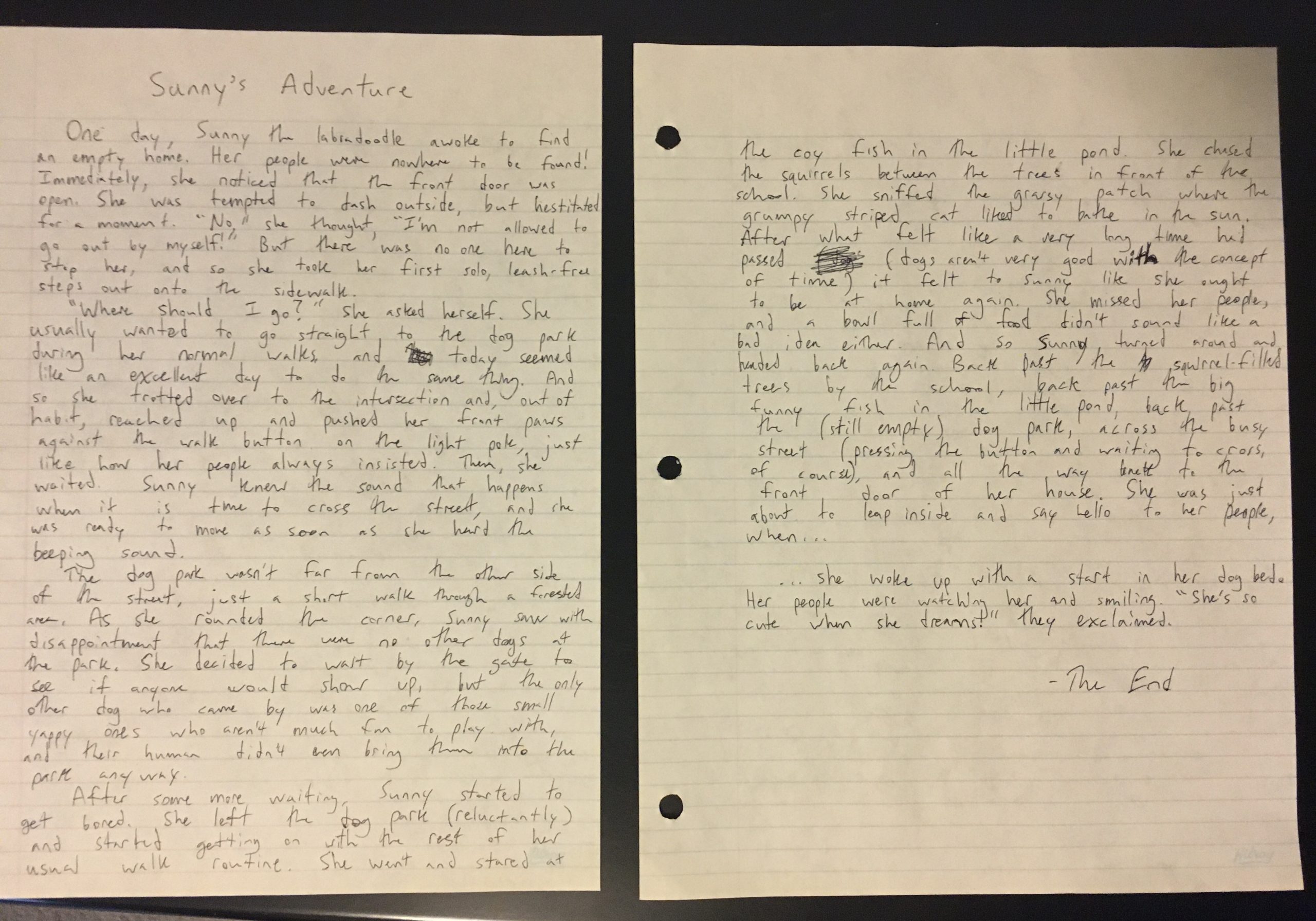Hyper-Glasses
I don’t know how I could live without my Hyper-Glasses.
The built-in Heads-Up Display augments my vision with so much useful information all throughout the day.
As I prepare to eat my breakfast on my day off from my main job, the Hyper-Glasses scan the label on my For-U™ cereal box and assure me with a translucent pop-up note in front of the package that the tailored blend of ingredients and added vitamins is optimally balanced for both my taste preferences and my health.
The augmented-reality overlay even shows me how full of cereal my bowl should be as I pour, based on my predicted activity level for the day ahead of me. It looks like less than what I used to fill up on every morning, but I guess that’s part of how my Hyper-Glasses are helping to keep me healthy!
As I put the box down again, my Hyper-Glasses alert me that I am running low on my personalized blend of For-U™ cereal and prompts me to order a new box for delivery. I take a second look at the cereal box and give it a shake. Wow, the Hyper-Glasses are right! I wink at the notification, and see a notice for the order confirmation email scroll across the top of my vision. How convenient! I was going to do some grocery shopping tonight, but I may as well get this item dealt with while it’s so convenient.
Another prompt in the corner of my eye: I noticed that you like For-U™ cereal, – I suppose I do, since I keep buying it! – and I think you would also like For-U™ snack bars. Care to try? Special offer: half price and free shipping on your first order!
Well, my Hyper-Glasses always seem to know what I like before I try it, so it’s easy to trust this recommendation. Let’s get some of those as well! Another confirmation e-mail scrolls by.
As I eat, my Hyper-Glasses ask if I would like to browse my social and news feeds, along with some thumbnail previews including… ok, wait- WHAT is that cat doing? It’s only 12 seconds long, I have to check this out.
The cat video was pretty funny, and the videos that came after were just as captivating (even the new ads were mildly entertaining). There was one about easy apartment-cleaning tricks, one about simple-but-delicious recipes, one about some silly new fad where people try to hold as much ice cream in their mouth as they can for as long as possible, one about playing tricks on a dog, one about-
Another alert from my Hyper-glasses: You are behind schedule for your calendar meeting with Steve at Central Park. Would you like me to order you an Auto-Cab™?
I originally just planning to walk, since it’s not really too far to the park (and because we’re trying to keep this hang inexpensive)… but I don’t want to be late! I wink at the notification to call a car, and wink again to confirm the economy option. So helpful!
Heading out the door, an alert pops up in the corner of my vision:
Did you forget you wallet?
How did it know? I mean, I wasn’t planning to bring it with me for just walking around the park, but sure, I guess it can’t hurt to have it with me.
I grab the wallet off the shelf by the front door, and the alert icon shifts into a green check-mark and then fades away. Locking my apartment door, my Hyper-Glasses tell me that I should take the stairs in order to make up for the walk I’m about the skip, but also that I will be charged a fee if my ride has to wait any more than 2 minutes for me. It’s twelve floors down to street level, so I take the elevator while thinking about how nice it is that my glasses are promoting healthy options.
As I exit my building, my Hyper-Glasses alert me to the current UV level and suggests a shop nearby where I can purchase some sunscreen. Shoot, I don’t want to get burned while outside! But I don’t have time for that right now. A yellow ring on my HUD highlights my ride as it waits next to the sidewalk. The door opens automatically as I approach. Another suggestion from my glasses: for a nominal fee, I can have the sunscreen delivered to me at the park. I wink at the alert to accept the offer. This is becoming an expensive trip to the park, but I guess I can pick up a couple extra hours doing later doing similar shopping delivery jobs in order to make up the difference.
As soon as my seat belt clicks into place, the self-driving car begins moving. The windows are playing translucent ads for all the same things that I always see ads for. Glad for my Hyper-Glasses again, I turn them to TV mode and cue up the greatest invention in the history of entertainment: SmartFlix™. A whole platform of entirely AI-produced TV content that is customized for each viewer. I have never seen anything better than this. Every show on here is my new favourite show. There’s the gritty hard sci-fi show with the clever plot twists and the kind of humour that gets me, the historical political drama with the awe-inspiring speeches, the adult-humour cartoon with the perfect amount of irreverence. I never would have thought that computer-generated shows could be good, but how could any show made by people ever get so close to exactly what I want to watch? Totally worth the monthly subscription, and it somehow keeps getting even better all the time ever since I connected it to my Hyper-Glasses account for increased personalization. It’s so good that I’m actually a bit annoyed when I’m jolted back into reality as my glasses exit TV Mode in response to my car arriving at its destination. Stepping out onto the sidewalk, an e-mail detailing the charge to my Auto-Cab™ account scrolls across the top of my vision.
I see Steve sitting on a bench in the middle of the park and make my way over to greet him. We haven’t seen each other since he moved away for work, and now that he’s in town again to visit family it will be nice to catch up. How has it been three years already? It seems like not so much time has passed, as if nothing new has really happened in the time since I last saw him.
He asks me what I think of the current political situation, but I don’t know what he’s talking about… he’s making it sound like a big deal, but I’m sure something would have come up on my feed if it was really that important. Besides, maybe it was just one of those deepfake videos he saw, it might not even be real. He changes the subject to other news I haven’t heard about either, something to do with a court case involving the parent company of HyperGlass™ and Supershopper™ and Auto-Cab™ and SmartFlix™…
SmartFlix™! Now there’s something interesting! I start telling him about the awesome new show that I just started watching on SmartFlix™… but of course, his shows are completely different and he won’t normally see the same things that are personally crafted for my tastes. Maybe sometime we can do a SmartFlix Together™ later when we’re both at home again and see what shows are generated when both our algorithms are combined? Just as the conversation stalls, my HUD highlights a figure riding a bicycle towards us on the path. They extend a hand to hold out a plastic shopping bag towards me, and I snag it as they ride by. My sunscreen has arrived. I offer some to Steve, but his Hyper-Glasses recommend another brand better suited for his skin, and so he orders that instead.
After a while more of trying to land on a solid thread of conversation (and receiving Steve’s sunscreen delivery as well), I find myself feeling hungry and thinking back to the small bowl of cereal I had for breakfast. Somehow, my Hyper-Glasses recommend with uncanny timing that there is a food truck that is parked nearby: For-U Smoothies – it’s even healthy! Good thing I brought my wallet… I’ll just have to squeeze in a couple more deliveries tonight. I suggest we grab a snack and Steve agrees. We each get a cup of algorithmically-optimized goop that takes into account our demographics, lifestyles, and preferences to create the perfect drink for each of us. We each ask how the other’s drink is, both knowing in advance that of course it tastes good and also that there is no point or benefit in sampling the others’ – that’s guaranteed to be a worse experience. So we enjoy our separate drinks and try to explain the different shows that we watch and the different meals that we’ve prepared from our personalized meal-delivery kits.
We start talking about how crazy it was back in the day when the same movie had to try to appeal to everybody, and the same restaurant had to have enough variety to appeal to everybody… so much of always needing to compromise and rarely being able to get exactly what you wanted, because it often didn’t even exist! And yet, there seemed to be a lot more fond memories from those times than recently…
My glasses show me an alert: I need to leave now if I want to be ready to pick up some delivery orders during the afternoon rush. In fact, I should have left a half-hour ago, but now I can still make it if I grab another Auto-Cab™. I saw farewell to Steve and suggest that we should hang out again later.
I run deliveries until pretty late into the evening. It’s a bad night for tips, but eventually I make enough to offset the unexpected costs from this day. I get home, drop my own packages on the kitchen table, and slump down into my couch to get comfortable before calling Steve to see if he’s still down to hang. As I open up my Hyper-Glasses’ social feed to send him a message, a thumbnail image on the timeline catches my eye. It looks like an outrageous remix of that cat video I loved from earlier today. Nineteen seconds long. I quickly wink it open to sate my curiosity before calling Steve.
An e-mail confirming my monthly gym subscription renewal snaps me back to reality. It’s now 1:30 in the morning. I have watched a lot of cat videos. I did not call Steve, and it is definitely too late now. To be fair, he didn’t call me either. I also didn’t go to the gym today, nor did I do my grocery shopping. I wink open my SuperShopper™ app, and in my weary state I start to nod off and accidentally toggle off the personalization options with my half-closed eyes. Hundreds of thousands of potential purchases stream in front of my eyes, with endless variations of portion sizes and ingredient mixes for any given one. Way too overwhelming to pick between. I quickly re-activate the personalization settings, and after a moment of staring at a familiar selection of items I like I just tell the auto-shopper to figure out what to order for me. I’m always happy with what it picks (and it’s a much easier way to make healthier choices for me since I missed my walk and my gym visit today) and if it’s a bit more expensive than I expect I can always just pick up some extra delivery shifts again. But right now it’s time to sleep so I can get up for work tomorrow morning.
I don’t know how I could live without my Hyper-Glasses.
===============================================
In a Better Future
In a better future…
People will be acutely aware of the powers of algorithms, artificial intelligence, and machine learning, and the consequences that these things can have on our lives if the way in which we design and use these tools is not carefully considered and scrutinized. People will be critical of what they see and read, and measures will be put in place to make the use of these influential technologies more transparent.
Schoolchildren will grow up learning about what AI can do, what it cannot do, how it can reflect and amplify injustices and systemic issues in our society, and how we must take those experiences as opportunities to make our society better when these kinds of problems are revealed to us.
The powers of algorithms, artificial intelligence, and machine learning will be harnessed to enrich the human experience and quality of life, not to manipulate our attentions and opinions in order to maximize profits.
New machine-augmented ways of harnessing and using massive datasets will create a new information age which presents new and novel approaches to remedying some of humanity’s most complex problems such as global food waste, wealth inequality, and climate change.
Social media will be more social and less media. AI will suggest mutually convenient times for friends and family to connect over a phone call or in-person for for a coffee, when they might otherwise be simultaneously passing their time idly alone. Alternatively, it will suggest other creative and personally fulfilling activities to engage with instead of consuming content. When it does suggest online content to consume, it will celebrate and support the sharing of content that not only fits with what a user might already enjoy, but also challenges them to discover things that are different, uncomfortable, and thought-provoking rather than appeasing. It will celebrate amateurism in the media arts, instead of building a machine which promotes commodification as the epitome of successful artistic endeavour.
News feeds, social networks, advertisers, and other content generators & aggregators will have to be transparent to their users about what content is and is not being included and for what reasons, as well as providing easy means to freely adjust how content is sourced and selected for their presentation.
We will not be tools aiding in the profit-driven data collection of technology corporations, but instead technological devices and services will exist as tools to better our human experience. Health, happiness, and informed awareness will be at the core of a better future with technology.










